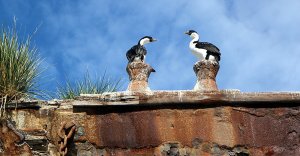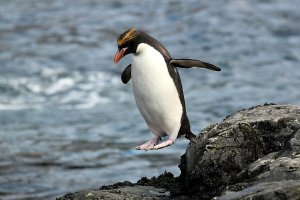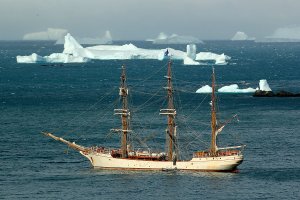Arto's Blog
| « Sailing across the Atlantic | Whalers and explorers » |
Stop, sit down and look around
Posted: 2015-09-30 23:22:00, Categories: Travel, Antarctica, Sailing, South Georgia, 707 words (permalink)With limited number of days in an exciting region, it's easy to end
up in a continuous rush of walking, changing lenses, taking more
photos and trying not to miss anything worth seeing. Wisely, our
guide Eduardo reminded us also to stop, put the camera down, look
around and appreciate being in such a unique place.
An excellent chance to do that was at Ocean's Harbor, a sheltered
bay with an old ship wreck slowly rusting near the shore. There were
animals around but no large busy colonies of penguins or seals. We
didn't have any walk led by the guides, just the usual transfer to
the shore by zodiacs and a time to be picked up at the same spot. As
expected, people spread in different directions in small groups or
alone.
It was a warm, sunny day, almost no wind. We walked first along the
beach and then climbed a little bit up the hillside. There we sat
down on the grass and observed the bay from above. Next to us was a
small creek with tiny pools where the water stopped on its way down
to the sea. A solitary fur seal was swimming in one of the pools,
rolling around and clearly enjoying the bath. Cormorants were nesting
in the ship wreck which already had grass growing on the deck. In
the background, the sun was setting behind the mountains, whose
shadow covered more and more of the bay as the evening approached.
On the way back to the pick up point, we saw a couple of South Georgia
pintails, the only duck species living on the island.
Another new species for us were the macaroni penguins, which we
could see during two landings. The funniest place to observe them
was at a rocky shore near Cobbler's Cove, where they were coming out
from the sea and climbing towards their colony. Wingless as penguins
are, they couldn't simply fly over the cliffs like other birds.
Jumping from rock to rock and zigzagging to find a passable route,
they made their way across the tricky terrain.
Our last big penguin colony was at St. Andrew's Bay, a postcard
view of high snow-capped mountains, glaciers and a river flowing to
the sea between green grass fields and tens of thousands of king
penguins. Nearby at Gold Harbour the same afternoon we were still
surrounded by lots of action and sounds, including a large and
smelly bunch of elephant seals spreading sand over each other and
plenty of snowy sheathbills, one of the smaller bird species,
bathing in the freshwater pools. Then we headed to the
south-east corner of the island, where we anchored in a small bay
inside the Drygalski fjord.
Around midnight we woke up to a loud bang. During the night, a
strong katabatic wind had developed and just blown us off the anchor
against underwater rocks. The ship wasn't damaged, but some tricky
maneuvering was needed. The captain turned on the engines and
navigated us out of the fjord in the darkness, between icebergs.
Still in the morning, a strong wind was blowing and prevented us of
doing the planned cruise inside the fjord. Instead, we went to see
our last macaroni penguins in Cooper Bay, wading between some of the
tallest patches of tussock grass we had seen.
Day by day on both Antarctica and South Georgia we got more used to
all the animals around us, but never became bored to observe them.
It was simply wonderful to be able to see all of them so close in
their natural environment, unlike in any other place we had earlier
been to. Penguins remained our favourites, they were simply so cute
and funny that it was hard to resist not to give one of them a hug.
When the days were up and we started sailing east on March 25th, it
was a slightly melancholic moment to say good bye to this very special
corner of our planet.
No feedback yet

Copyright Arto Teräs <ajt@iki.fi>, licensed under the Creative Commons Attribution-Share Alike 3.0 Unported License. (Unless otherwise mentioned in individual photos or other content.)






